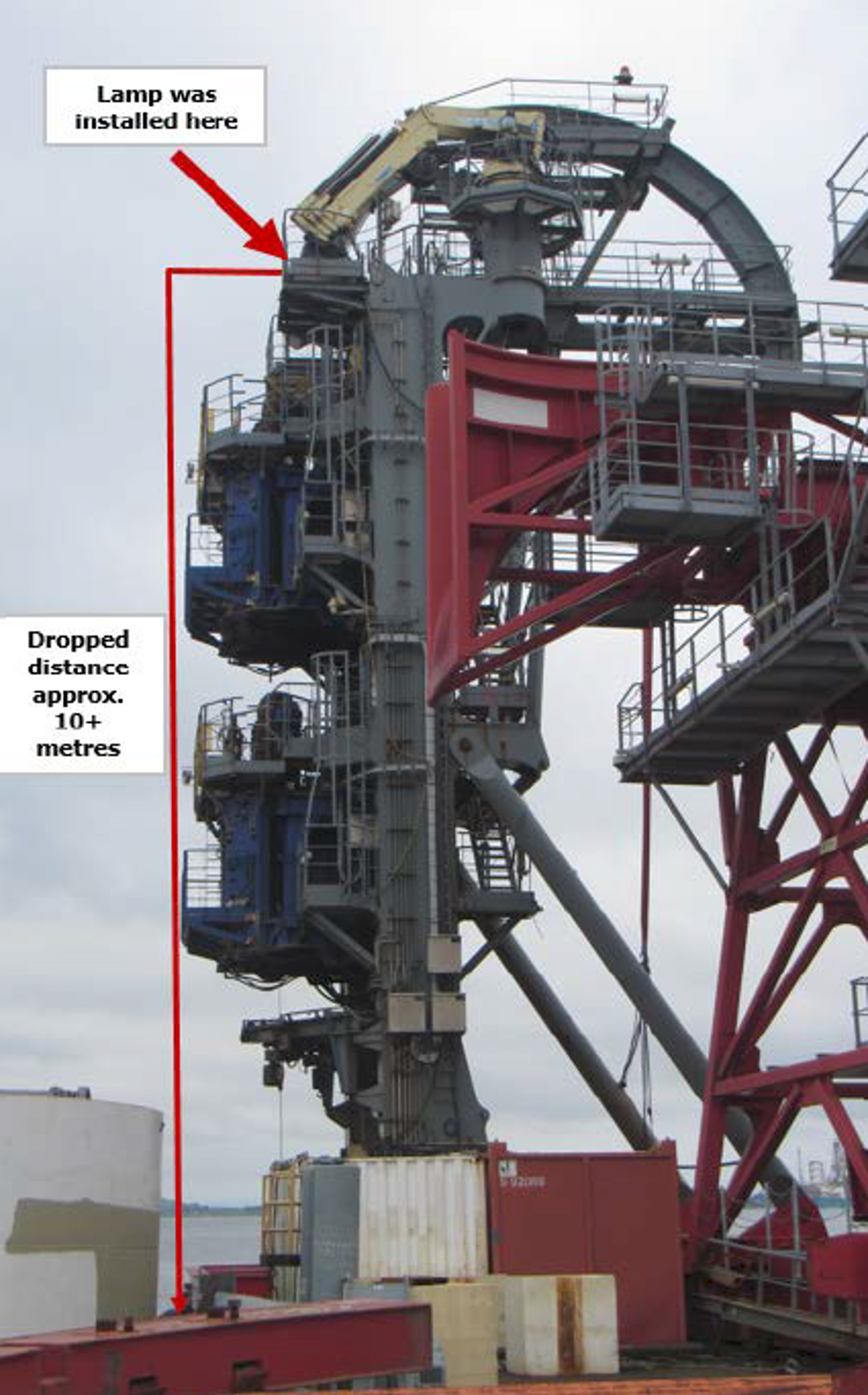High potential near miss: Dropped object (flood lamp)
- Safety Flash
- Published on 13 February 2019
- Generated on 10 July 2025
- IMCA SF 02/19
- 2 minute read
Jump to:
Yard personnel found a flood lamp broken on the ground.
What happened?
The lamp was found to have fallen from a VLS tower that had been in long-term storage for a number of years. There were no injuries, however the area where the lamp landed was regularly attended by workers.
The lamp weighed 15 kg with the glass and bulb. It landed about 0.5 m from the base of tower (red structure in top right corner).

the flood lamp fell approximately 10 metres
What went wrong?
- Mounting bolts and bracket, together with secondary securing wire, were fully corroded.
- There had been no maintenance, nor inspections of any kind during the storage period.
- There had been no evaluation carried out at the start of the storage period, to consider removal of this type of ancillary equipment, or to increase secondary securing.
What lessons were learned?
- Ensure storage philosophy and maintenance regime is discussed properly to ensure continued integrity of long-term stored assets.
- Ensure dropped object surveys include equipment in long-term storage.
- Consider removal of as many ancillary items as sensible, when initiating the long-term storage of equipment.
- Focus on material selection for secondary securing; ideally using seawater resistant stainless steel with double securing clips to withstand corrosion.
Related Safety Flashes
-
IMCA SF 31/17
15 December 2017
-
-
IMCA SF 11/17
22 May 2017
-
IMCA Safety Flashes summarise key safety matters and incidents, allowing lessons to be more easily learnt for the benefit of the entire offshore industry.
The effectiveness of the IMCA Safety Flash system depends on the industry sharing information and so avoiding repeat incidents. Incidents are classified according to IOGP's Life Saving Rules.
All information is anonymised or sanitised, as appropriate, and warnings for graphic content included where possible.
IMCA makes every effort to ensure both the accuracy and reliability of the information shared, but is not be liable for any guidance and/or recommendation and/or statement herein contained.
The information contained in this document does not fulfil or replace any individual's or Member's legal, regulatory or other duties or obligations in respect of their operations. Individuals and Members remain solely responsible for the safe, lawful and proper conduct of their operations.
Share your safety incidents with IMCA online. Sign-up to receive Safety Flashes straight to your email.
